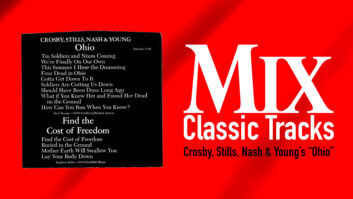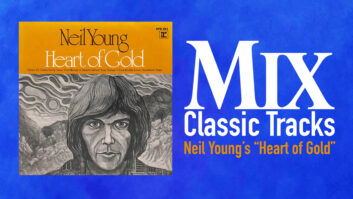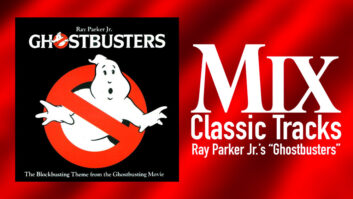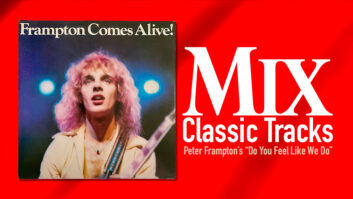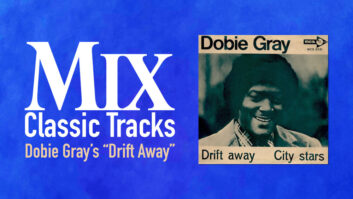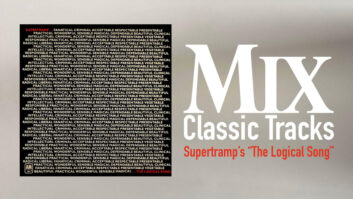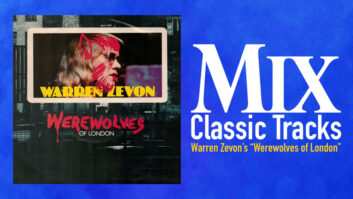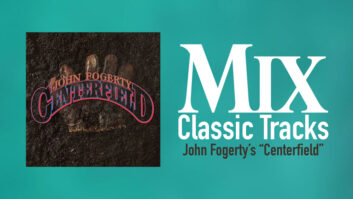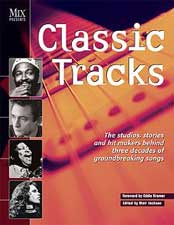
Read more “Classic Tracks”
Buy the book
Chaos may be the natural state of the universe, unless artificial order is imposed on it. But in pop entertainment, the most successful chaotic music will always ultimately be tamed and leavened to some degree. So it was in the post-punk era when the survivors of Britain’s most fecund musical period since The Beatles began to get a coat of polish and make the rounds of Top of the Pops in search of wider audiences. And so it was for the ska-crazy English Beat, which rose out of the smoldering post-punk ruins of Birmingham, England, in the late ’70s and early ’80s. Though The Beat (as they were called in Europe) had been quite successful, they broke up in 1983, with leaders Dave Wakeling and Ranking Roger forming General Public, and two other members — guitarist Andy Cox and bassist David Steele — splintering off to start the more commercially oriented Fine Young Cannibals with singer Roland Gift. Gift’s vocals were tailor-made for radio — a wonderful combination of rock’s edge, Motown’s soul and a classic R&B falsetto. It didn’t hurt that he looked good, either. The trio put that together with their own vision of American soul, English pop and modern European dance music to create a powerful blend, whose eponymous debut record, in December 1985, drew critical acclaim and decent sales in England. The album was released in the U.S. on the IRS label the following spring.
The band toured relentlessly and also got involved with a couple of different soundtracks (their cover of The Buzzcocks’ “Ever Fallen in Love” was a highlight of the excellent Something Wild soundtrack), but mass success eluded them until they put out their second album, The Raw & the Cooked, in 1989. A single from that record, “She Drives Me Crazy,” roared to the top of the charts in the U.S. (Number One) and UK (Number 5) and became positively ubiquitous at the end of the ’80s — a last gasp of UK pop power before the ’90s muddy and melancholy deluge came rushing out of Seattle.
In 1989, David Z was an engineer and producer based in his hometown of Minneapolis, working in the not-unpleasant shadow of the talented and demanding artist then (and now) known as Prince. Z had even recorded the demo that got Prince his first record deal. He continued to work with Prince and his musical minions over the next decade, but by the mid-1980s was chafing to establish his credentials outside of Prince’s stable. But his association with Prince would turn out to be beneficial in an ironic way:
“I got called out of the blue on [Fine Young Cannibals],” recalls Z, whose production discography also includes records for Billy Idol, Big Head Todd, Collective Soul, Buddy Guy, Kenny Wayne Shepherd, Johnny Lang and Leo Kottke, as well as Prince offspring like Sheila E. “What it was, they wanted to work with Prince for their next record. They were told that Prince doesn’t work with anybody that way, as a producer-for-hire. But they were also told there was someone who works with Prince who does. That was me, and they were willing to try it out.”
Z had a meeting with representatives of Fine Young Cannibals’ label, who mentioned that the band, then living in London, had been taking an unusually long time between their first and second records. “[The label] suggested that they come to Minneapolis so that they would have no choice but to work and get the record done,” says Z, who also points out that there is precious little to do in Minnesota in the wintertime besides hibernate and work. “They faced extreme culture shock when they got over here,” he recalls. “They had shaved heads and a punk attitude, and we didn’t have a lot of that yet in Minnesota. I took them over to some clubs on First Avenue, and all they could do was comment on how everyone looked so big and blond and Swedish. I don’t think they ever really got used to it over here.”
Regardless, the band and Z hit it off, and pre-production consisted of sending songs back and forth for consideration. When what would eventually become “She Drives Me Crazy” made it into Z’s tape recorder, the melody got his immediate attention. However, the song — then titled “She’s My Baby” — wasn’t the band’s favorite by a long shot. “I called them up and said I love this melody and I could create a great groove for it,” says Z. “They said they were ready to throw it away. But I wanted to try it. So they started rewriting the lyrics to something they liked better, starting with the title, which immediately made a huge difference. ‘She’s My Baby’ is kind of a nebulous sentiment — it’s something you say, but it doesn’t hit home. ‘She Drives Me Crazy’ — now there’s something that every guy in the world has said at least once in his life with conviction.”
In fact, it often leads to criminal convictions. But in telling this part of the story, Z underscores a critical point found in most great records: The sentiment of the lyric infuses and affects every aspect of the recording, from the production process to the vocal and musical performances to the passion with which technical expertise is brought to bear on it. “The change of the lyric to something they could get behind changed the attitude of everything and everyone toward the project,” he observes.
The band went into Studio B at Paisley Park, Prince’s recording complex in Minneapolis. The room had been designed with Z in mind and sported a DiMideo-modified API console, modeled after the one Z and Prince had used at Sunset Sound in Los Angeles. “Only this one had an even bigger, fatter low end,” says Z. Z started the session for “She Drives Me Crazy” as he does most productions he’s part of, by creating a groove loop on a drum machine, in this case a Linn 9000. Musically, the song is a celebration of space between parts, and the parts are all designed to be tight and funk-like in their precision but with rock-edged sounds, such as the distorted guitar that works as a counterpoint to the vocal melody and Gift’s floating falsetto. But if “She Drives Me Crazy” is remembered for anything, then it is for its snare sound, which Z created that first day of tracking.
“I took the head off a snare drum and started whacking it with a wooden ruler, recording it through a Shure 57 microphone,” he says. “As I did that, I started twisting the hell out of the [API 550] EQ around 1 kHz on it, to the point where it was starting to sound more like a crash. I blended that with a snare I found in the Linn itself, which was a 12-bit machine, so it sounded pretty edgy to start with.” But the coup de grace for the sound was when Z pumped the processed and blended sample through an Auratone speaker set upside down atop another snare drum, which rattled the metal snares and gave the result some ambience and even more high end. The whole thing was limited slightly and then sent to a track on a roll of Ampex 456 running on a Studer A800 at 15 ips. Only a slight amount of reverb was added to the track later on. The sonic result was closer to a hollow wood block sound than any snare found on a conventional rock record, and in becoming, along with Gift’s vocals, the signature of the song, it would go on to have many lives of its own subsequent to the single’s run up the charts. More on that in a moment.
Guitars got similarly complex treatment that belied the seeming simplicity of their final sound. The staccato single-note lines were actually layered six deep, with a few chords thrown in here and there. Some of the lines and chords were actually recorded only once, then manually triggered from a sampler during playback and mixing. One of the lines was also played back through an underwater pool-type speaker Z had laying around, then re-recorded to tape, giving it a muted, mysterious quality that no onboard or outboard EQ could mimic.
“What really made the guitars stand out, though, was that as Andy [Cox] was playing to chord parts, I was slowly twisting the EQ from one extreme to the other, giving it this wah effect,” says Z. “So every part on the record has a very individual and unique sound. But there aren’t many parts at all, so the space between them becomes part of the sound.”
Gift’s vocals were recorded a couple of days later through a Neumann U87 microphone. Up to that point, the band had been rewriting the lyrics as they went along. As they came together, so did small but perfectly phrased vocal scats by Gift, as punchy and precisely placed as the guitar lines. “It was a matter of small things like that that were giving the track a personality to match the attitude of the new lyrics and the sentiment of the new title,” says Z. “To me, that was as important as the snare sound and anything else. Every note on the track and every sound had its own sense of purpose, and all worked toward supporting the attitude of the song.” And because each of the parts were recorded individually — there was no drummer on the song — the processes of tracking and overdubbing blurred into each other. “Parts worked off other parts and the groove, not off of a basic track,” he adds. One result of that was a record that just about mixed itself. Because most of the sounds and signal processing were recorded during tracking, the mix consisted more of muting tracks than effecting them. “I don’t like to leave decisions for later,” says Z. “I like to make them as they go down. It’s more spontaneous. So it sounds on the multitrack the way it’s going to sound in the final mix pretty much. It really keeps people involved in the process of recording, not having to wait to see how it’s all going to come together in the end during the mix. You don’t spend the entire recording process trying to imagine what it’s going to sound like. It already sounds like what it’s going to sound like.”
Reaction to the record was initially mixed from the label. Z recalls that a general comment was that Gift’s vocals were too low in the track. “That was one of those pop music arguments, where they always want the vocal to be the center of attention and way out in front,” he says. “No one in the band agreed with that, and we just said go and listen to a Rolling Stones record, and let us know how far the vocals are up front on that.” Meanwhile, Z also notes, label exec Jehrl Busby from distributing label MCA told the band it was a hit the moment he heard it in his office.
It was. But while “She Drives Me Crazy” would go on to be included in dozens of compilation records over the next decade, the snare sound created by David Z would have even more of a life, both by being approximated in various interpretations on records and commercial tracks and by being blatantly sampled on other recordings. The one that stands out most in Z’s mind is its appearance on a national Pepsi-Cola campaign a few years after the single was a hit. “It was all over television, and there was no doubt as to what had inspired the sound,” he says. “But it was before people thought seriously about protecting things like sounds. The legalities of sampling were still being thrashed out. No one was sure if you could copyright a beat or a groove. I’m still not sure. All I know is, I went to my lawyer about the Pepsi spot, and he said to me, ‘What are you gonna do? Pepsi has a lot of money and a lot of lawyers.’ Did I feel like being an expensive test case? It was so recognizable that any court would have seen it immediately. But who knows, and that’s one of the pitfalls of making something sound very unique, of not just going for the usual pop sounds. Besides, it was so easy to steal — the song starts out with nothing but the groove, so no one has to do a lot of cleaning up or editing to sample it.”
The matter irked Z but hardly traumatized him. He just went on to the next thing and the next sound and the next groove. “If you’re going to get crazy about stuff like that, you lose sight of why you did it in the first place,” he says. “If I didn’t like music so much, I wouldn’t have been in the studio in the first place.”
As for Fine Young Cannibals, they had a second Number One hit from the album Good Thing, a Number 11 song with “Don’t Look Back,” won Best Group and Best Album honors at the Brit Awards in 1990, but have all but dropped from sight since.
